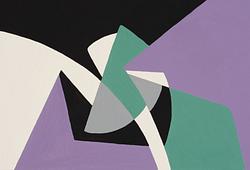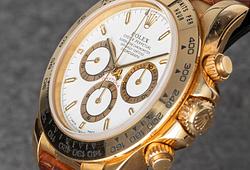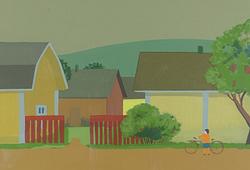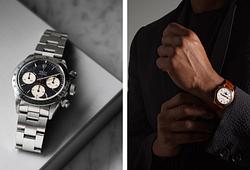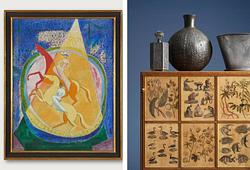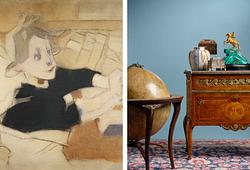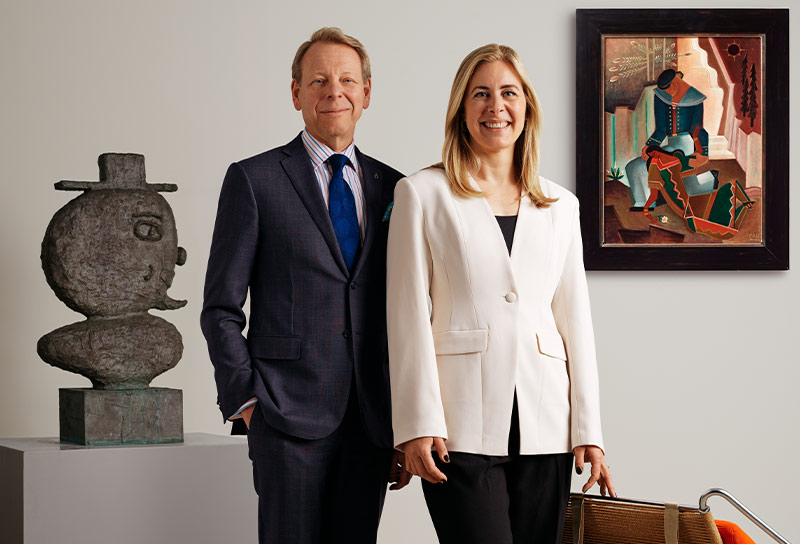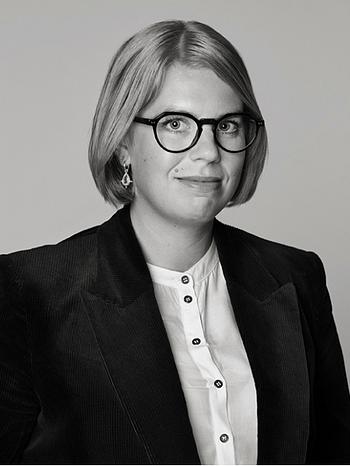Agnes Cleve
A study for "S:t Eriksbron"
Signed A. Cleve. Executed in the 1910s. Canvas relined on panel ca 36 x 46 cm.
More information
1915 bosatte sig de nygifta makarna Jon-And och Cleve i en ateljé på S:t Eriksgatan 63 i Stockholm. Ateljén var belägen vid Kungsholmsstrand, intill Sankt Eriksbron, med Atlasområdet på andra sidan vattnet.
Cleve behövde enbart blicka ut från ateljéns fönster för att finna motivkretsar vilka idealiskt lämpade sig för att destilleras och uttolkas enligt futurismens och kubismens principer.
Den moderna maskinålderns inträde, illustrerat av ånglokomotivet, hade redan år 1844 tjänat som motivkrets i Joseph Mallord William Turners "Rain, Steam and Speed – The Great Western Railway". År 1877 utförde Claude Monet sin berömda svit med målningar avbildande Gare Saint-Lazaire i Paris. I dessa målningar sveps de frustande ångloken in i rökmolnens slöjor vilka dröjer sig kvar under stationens glasklädda gjutjärnsarkitektur.
I katalognumret som är en förstudie till en målning från 1915-16 (jmfr Bukowski Auktioner, Familjen Anderssons Samling H042, 2012, kat. nr. 35) har Cleve låtit rökmolnen breda ut sig över hela duken där de i stiliserad form blir byggstenar i den modernistiska kompositionen. Det av kubismens fragmentariserade bildrum inspirerade motivet tillförs ytterligare spänning av futurismens fokus på rörelse och energi där tåget rusar fram under Sankt Eriksbrons tre bågformade brospann.
Artist
Agnes Cleve was born in Uppsala in 1876. After completing her secondary education, she studied art at the School of Arts and Crafts in Stockholm. When she started a family she moved to Gothenburg and studied art at Valand where Carl Wilhelmsson was her teacher. After a difficult divorce, Angnes moved to Paris in 1913, where she studied for Le Fauconnier together with John Jon-And. They eventually got married, and later moved to Stockholm and settling in Gothenburg. The couple often stayed at their summer cottage by the Gullmar Fjord, a place called Källviken, which became a gathering point for several artists, including the couple Gabriele Münter and Wassily Kandinsky. Kandinsky was, in his homecountry Germany, the leader of the group “Der Blaue Reiter”, a group which advocated for cubism and German modernism. It is without a doubt that they influences Agnes Cleve and Jon-And. Cleve has done several artists trips to paint Sandhamn, Skagen, London, Italy, Holland, Belgium, North Africa, Spain, Turkey, and the USA (where he even lived for a period). In Cleve’s collection, one can find figure paintings, window views, portraits, cityscapes, and west coast genres. Agnes Cleve's art was exhibited across Europe (Paris, Amsterdam, Copenhagen, among others). There was a lot of talk surrounding her exhibition together with none other than Sigrid Hjertén in Paris in 1937, and she was classified by a German critic as Sweden’s most influential artist during the first half of the 20th century. She is currently represented by the National Museum, Gothenburg’s Art Museum, Gävle Museum, Norrköping’s Museum to name a few.
Read more



